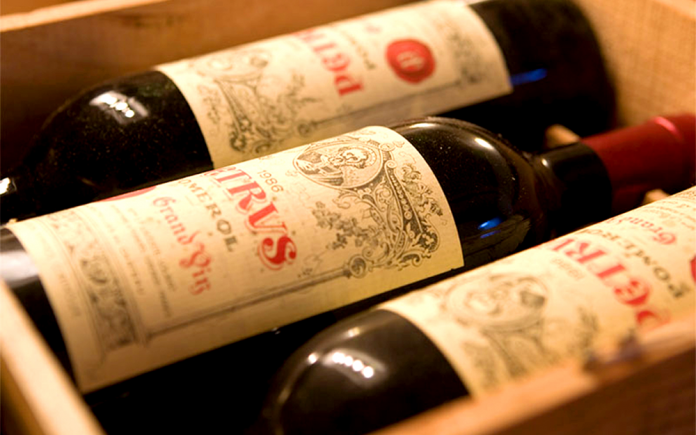
By Rick Riozza
The baby-boom generation who entered and played the wine game back in the 1980s, pretty much fell into two distinct Cabernet Sauvignon groups: we learned to love the California Cabs from Napa/Sonoma; or, we jumped into the French red Bordeaux, where we had to catch up fast on the two century-long history and appreciation of the most famous region in the wine world.
Bordeaux, at that time, was the gold standard. Sure California had great Cab vintages such as the 1974s and ‘85s—and would go on to shine at many European wine competition (the movie “Bottle Shock” does a great job with the story surrounding the “1976 Judgment in Paris”). But Bordeaux was all the rage, especially in the auction market where vintage Bordeaux began to bring in the big, big bucks.
But now, as Wine Spectator points out, “for the last few decades, Bordeaux have been grappling with shrinking sales of value wine. Consumption in France has dropped by more than 70% in the past 75 years. In France, people aren’t just drinking less, they’re opting for beer and cocktails; and when they do drink wine, they tend to prefer higher-end reds as well as white, rose, and sparkling wines.”
In the U.S., with all of the West Coast and international wine competitions, Bordeaux has also, in the past decades, shrunk in young American’s vino desires. But the baby-boomers are still buying the stuff—and, they have the money to pay for it.
Sales of Bordeaux wine to the U. S. have increased dramatically in 2021. According to the Bordeaux Wine Council, sales increased by 67 percent to 395 million bottles, thus reaching a new record turnover. The quantity increased by 24 percent to 33 million bottles. This means that above all, more expensive wines were in demand. The U.S. is the second most important market for red Bordeaux—and the largest for white Bordeaux wines. The suspension of the additional import duty of 25 percent on French still wines by US President Joe Biden in March 2021 could significantly strengthen sales.
But have you heard— “The Case of the Meager Harvest and the Imposter Bordeaux”, also reported in Wine Spectator, which doesn’t help with the younger vino voices in our midst: “It all started with miserable weather. Back in 2013, a meager crop of wine from the Blaye Cotes De Bordeaux region panicked the businessmen.”
One of the big wine players there in the region organized the purchase of cheap Spanish table wine that got trucked into France and was eventually sold as generic Bordeaux. Things went pretty well, and from 2016 to 2019, 131 tanker trucks hauled the equivalent of 380,000 of the cheap Spanish wine to France where is was passed off as more expensive French wine, mainly Bordeaux appellations such as Margaux & Pomerol.
I don’t know if there’s any consolation to the wine crime committed, but for a long time in the early history of Bordeaux wine, Spanish wine—particularly the red Tempranillo/Rioja wine was often taken up to Bordeaux to “augment” the claret wine during very rainy vintages.
And speaking of some “extreme” weather, the latest 2020 Bordeaux vintage, just released, saw all types of extreme weather: “After a very wet spring that showed touches of frost and hail along the way, a warm and excessively dry summer led to one of the earliest harvests of the past 20 years. Heavy rains in August broke the drought, but the downpours were of varying intensity around the region resulting in many different ripening.”
So, are the Bordelaise singing the blues or what? Because the Bordeaux region is so diverse—Left Bank, Right Bank, Barsac & Sauternes, you’ll find some excellent wines and some very good buys—at least for Bordeaux! So sing it baby!
And now: some good buys indeed! For you folks who have deep pockets and have to have the best things in life, consider your favorite wine of all time: Château Pétrus
The 2020 Château Pétrus, which will sell for around five thousand dollars a bottle, was recently reviewed in Wine Spectator: “Delivers a fairly gorgeous beam of ripe, lush, unadulterated raspberry fruit flecked with light anise, apple wood, and sweet tobacco hints along the way… showing a subtle mineral edge that adds detail on the finish.”
It looks as though the 2020 Château Talbot, at $60, from the St. Julien, is one of the best buys of quality for the price. Personally, this Bordeaux has always been one of my favorites because of the quality/price perspective. The WS review reads: “Exuberant, with gorgeous plum sauce, licorice root, blackberry compote, and apple wood notes vying for attention, as graphite and cast iron accents drive along underneath. Reveals a little flash of exotic toast that snazzes up the finish.” It’s a blend of Cab Sauv, Merlot, and Petit Verdot.
For us Bordeaux die-hards who love all things Pauillac (the Latours, Rothschilds, and Pichons), probably the best buy for a quick peak & taste of the 2020 vintage, is the 2020 Château Haut-Batailley Pauillac Verso at around $35. The review reads: “Enticing with an open feel combined with a good depth of blackberry and black currant fruit flavors, lined with singed balsam wood and tobacco hints. Ends with a perfumed, old-school feel. A blend of Merlot with Cabernet Sauvignon.” Cheers!










































